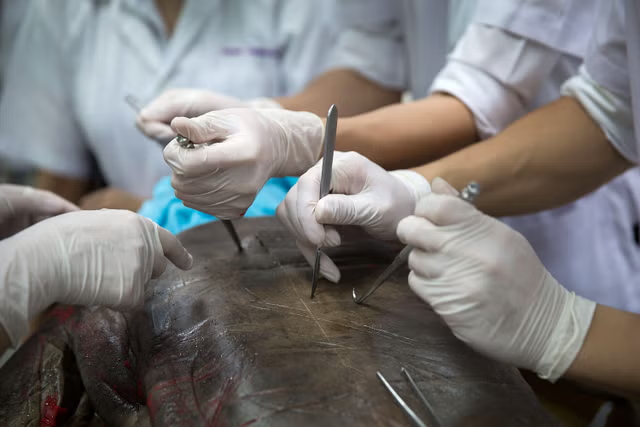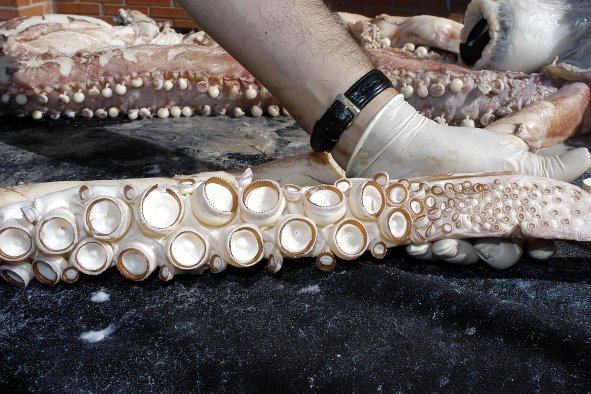A team of archaeologists has uncovered a hidden tomb containing the remains of 12 ancient skeletons beneath an iconic building known as "The Treasury" in Petra, Jordan.
The discovery, captured during the season premiere of Discovery Channel's Expedition Unknown, promises to shed new light on the mysteries of the ancient Nabataean civilization.
The excavation was granted rare permission to conduct remote sensing scans and dig beneath The Treasury. Adventurer Josh Gates joined the joint Jordanian/American project, which made its stunning find in what the Discovery Channel describes as one of the "New Seven Wonders of the World."
"We were absolutely stunned by the revelation of this hidden chamber," Gates said in a statement. "Since nearly all of the tombs at Petra have been found empty, this is perhaps the most significant tomb ever found at Petra and a discovery of historic proportions."
The true purpose of the Treasury, famously featured in Indiana Jones and the Last Crusade as the resting place of the Holy Grail, has long puzzled archaeologists. This discovery could provide crucial insights into the building's history and the lives of the Nabataeans who carved the city into desert canyon walls 2,000 years ago.
"There is so much that we have yet to learn about the Treasury," Pearce Paul Creasman, Executive Director of the American Center of Research (ACOR) who led the dig, said in the statement.
"When was this remarkable structure built, and why? Little did we know that this dig might completely change what we know about the Treasury and help solve the mysteries of the Nabataean people," he said. "With the support of the Jordanian government, this excavation is bringing us closer than ever to answers."
In an uncanny twist, one skeleton was found clutching a ceramic vessel bearing a striking resemblance to the Holy Grail depicted in the Indiana Jones film.
"When we spotted what looked like a chalice, all of us just froze," Gates said. "It looked nearly identical to the Holy Grail featured in Indiana Jones and the Last Crusade, set in the ancient building directly above the tomb. It was the ultimate moment of life imitating art."
Tombs at the site were first discovered back in 2003 but had not been explored until now. The team employed new techniques, such as remote sensors powered by radars, to find the tomb, which had been buried deep beneath the surface over the centuries.
The Holy Grail, from which Jesus Christ supposedly drank at the last supper, has been a mythical legend on the bucket list of archaeologists for generations. It became part of popular imagination originally thanks to the legend of King Arthur and his knights who sought the cup.
Further examination of the cup discovered at Petra revealed the object to be the top part of a broken jug, likely dating to the first century BC. While not the mythical Holy Grail, this artifact and the other contents of the tomb promise to provide valuable insights into Nabataean culture and history.
Do you have a tip on a science story that Newsweek should be covering? Do you have a question about archaeology? Let us know via science@newsweek.com.
Disclaimer: The copyright of this article belongs to the original author. Reposting this article is solely for the purpose of information dissemination and does not constitute any investment advice. If there is any infringement, please contact us immediately. We will make corrections or deletions as necessary. Thank you.



